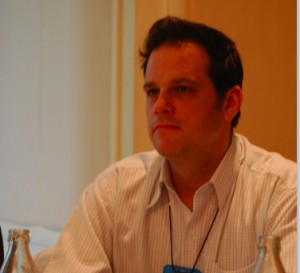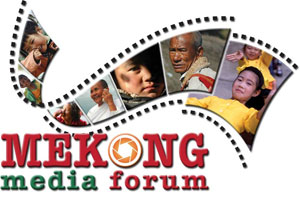By Joel Chong
CHIANG MAI, Dec. 9 (TerraViva) – Live Aid, Hurricane Katrina, Obama. Media have traditionally been a
powerful rallying force for change and action. However advocates warn that sensationalisation and irresponsible reporting might do more harm than good for issues such as child migrants and human trafficking.
“The media is a powerful force in raising awareness about these issues,” said Geoffrey Keele of the United Nations Children’s Fund (UNICEF) at the ‘Children and Borders’ session at the Mekong Media Forum here.
Children in the Mekong region are trafficked for purposes including, but not limited to, manual labour in, sexual exploitation, marriage, adoption, or begging and sale of small items, said ‘Child Trafficking in East and South-East Asia’ which was released by UNICEF in August this year.
“But sometimes the media end up exploiting the children themselves though sensationalising the story by disregarding a child’s opinions or rights, [or] by not giving confidentiality, not protecting the identity of the child who’s already in vulnerable position,” he added.
A child, as defined under the UN Convention on the Rights of the Child, is a male or female under 18 years of age.
Up to 36 percent of the newspaper reports and 34 percent of the TV reports in Thailand violated children’s rights, said a recent UNICEF-sponsored study, ‘How major Thai print and electronic media present news about children’ that was released last month by Thammasat University’s Faculty of Journalism and Mass Communication.
Thailand is the biggest receiving country for youth migrants, and many who cross over end up doing domestic work, transient agriculture/fish processing jobs, and sex-related businesses, said Allan Dow of the International Labour Organisation (ILO) at the session.
According to the report, most violations were related to privacy issues, such as disclosing the identities of children who were either victims of crimes and accidents or suspected of criminal activities. Numerous media reports revealed the children’s names and/or addresses and names of schools, parents and other relatives.
Other forms of violations included using sensational, provocative and/or inappropriate languages when referring to children or their behaviour.
“A child in distress really grabs the hearts and minds of the audience. Sometimes that can really motivate action, but you have to look at how you do that coverage, because the coverage can in some ways re-victimise or further exploit that child,” said Keele.
Keele also warned that the media had a powerful influence in shaping public perceptions.
In December 2006, a random household survey in Thailand commissioned by the ILO and the United Nations Development Fund for Women (UNIFEM) found that 79.9 percent of those surveyed recalled reading about migrant workers in the news who had committed serious crimes in Thailand. Only 41.4 percent recalled reports where migrants had been cheated or abused by employers and only 29 per cent had read about domestic workers being cheated or abused.
“Teens are especially vulnerable to migration-related abuses,” said Dow.
According to the United Nations’ ‘A Global Report on Trafficking in Persons’ released this February, more than 50 percent of trafficked persons in the Mekong region are minors. Globally, the percentage of minors among trafficked persons has increased from 14 percent in 2003 to 22 percent in 2006.
Keele also acknowledged that the lack of statistics and data on child migrants deterred journalists from cover the issue.
“These young people only surface when there’s been violence and they’re forced to run away, or picked up by the police,” said Dow.
“We don’t have accurate data, because it’s hidden, it’s criminal activity,” Keele said. “It places an additional burden on journalists to show the story in a deeper way beyond just the numbers… It’s far more challenging, not just in this region but globally,” he added.
Another misconception was the absence of boys in child trafficking, said Dow.
“It’s not just girls, but often we focus just on girls. I think it’s time we understand that when we’re reporting news about, exploitation of young people, that the boys are also moving… they end up in fishing boats and doing dirty and dangerous jobs… places where there are little or no labour inspection,” he added.
Ultimately, both advocates agreed that the best solution was for the media to listen to the children and their views when reporting in issues related to them.
“The most important thing is to listen to them, they are best place to tell you their needs, rather than officials, rather than me, rather than someone who works to advocate for them, their views are still the most important,” said Dow.
“Take young people seriously; they are not objects to talk about, but people to talk to,” he added.








